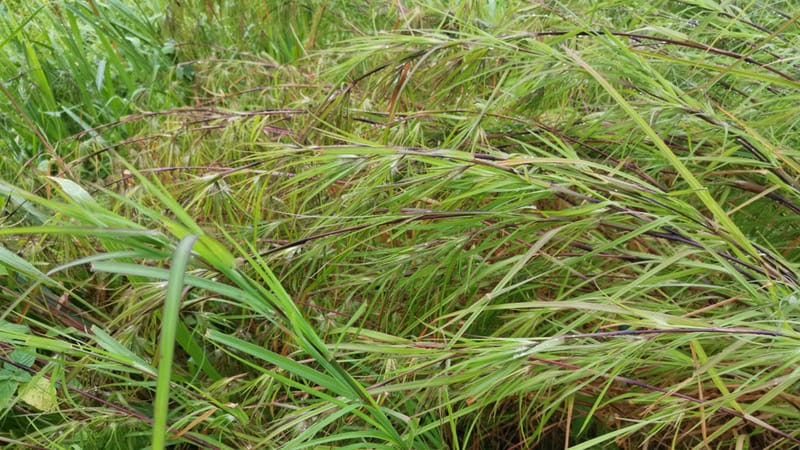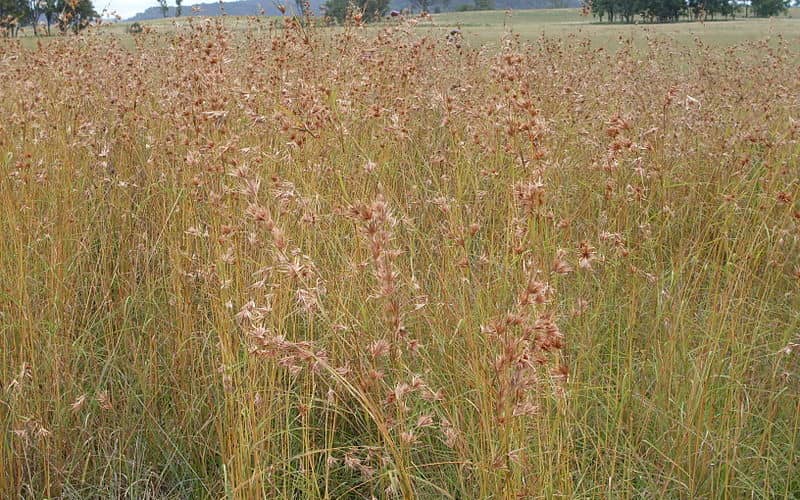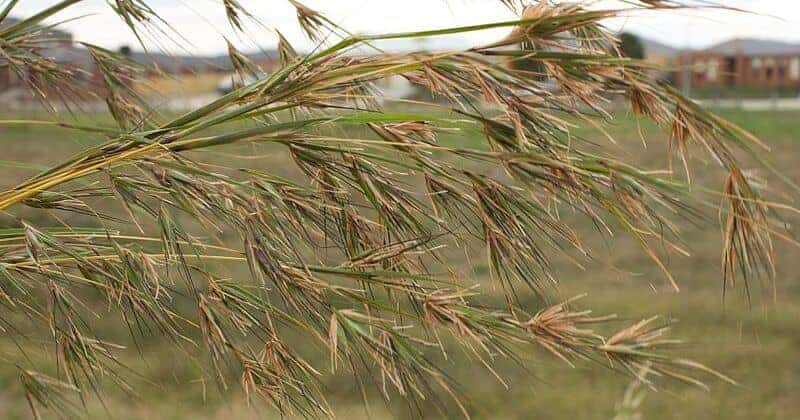Are you hopping over horticulture? You may be interested in growing a Kangaroo Grass lawn if you are.
These Australian plants are easily recognised by their bluish-green leaves and their thready ‘spikelets’. They’re native to Australia, but are also found in Africa and parts of Asia.
How to grow a Kangaroo Grass lawn? The most important thing is to keep the area weed-free. Sow triandra seed about 15cm deep for maximum soil and moisture contact. These plants will grow in most soil types, but prefer clay or sandy loam that drains well. Mow once a year to minimise dead foliage and encourage new growth.
You might roo missing out on having this Australian native grass, so here’s how to grow a Kangaroo Grass lawn.
About Kangaroo Grass
Kangaroo Grass (Themeda triandra) is one of several native Australian grasses. It’s found all over Australia, but thrives well in New South Wales (primarily southern Queensland).
It grows mainly in the bush, and is the most widespread grassland and woodland species in the country.
These Australian plants used to be called Themeda australis, separating them from the other species in Africa. Now, however, they’re considered the same species under Themeda triandra.
How to recognise Kangaroo Grass? This tufted perennial has bluish-green leaves in the summer that turn a rough purple in winter. It grows in large tussocks, producing flower spikes up to 1.5m. In late summer to autumn, its flower spikes turn a rich bronze.
Kangaroo Grass is a very palatable food source to cattle and horses while it’s green. But this deters seed production, which often causes a decline under grazing.
It is, however, reasonably resilient under dry season grazing and mowing, as it can grow back when it begins to rain. Meanwhile, its seeds attract birds for feeding.
And yes – kangaroos may eat kangaroo grass sometimes!
Humans can also eat these native plants. For example, aboriginal people harvested the seed heads in the summer and ground them to produce flour.
In recent years, this grass family has been overtaken by black speargrass.
Kangaroo Grass is ideal for low-maintenance or coastal gardens. It’s used for ground cover or border plants, and is a great native alternative for lawns.
Growing A Kangaroo Grass Lawn
Uses
The seed heads are edible and can be used to make flour.
Kangaroo Grass is also an excellent decorative plant, and works well for erosion control.
Germination
Plant Kangaroo Grass seeds or seedlings in early spring to mid-summer.
Note that seeds require a minimum of 20ºC to germinate, but seedlings can be planted up to mid-autumn.
You do not need to till or fertilise your garden before sowing Kangaroo Grass seed.
Plant seeds about 15cm into the ground for maximum soil contact and moisture.
Do not mulch the ground too richly as this could impede germination.
Soil
These native plants will thrive in most soil types, from dry to moderately draining.
But they’ll do best in sandy loam or clay loam, as well as sandy soils along the coast.
Light
These Australian plants grow best in full sun, but will tolerate a light shade.
They grow vigorously, and will shade out most competing weeds.
Climate
Kangaroo grasses are resilient plants, and will grow in most climates.
They prefer subtropical to warm temperate zones, but will also grow in cool temperate and semi-arid areas. They will tolerate a light frost.
Water
Water well while the seeds are establishing to keep the ground moist.
Once mature, though, these Australian plants are extremely drought tolerant and require little summer watering.
Maintaining A Kangaroo Grass Lawn
Kangaroo Grass is best in areas with low foot traffic, and in small spaces. It also makes an excellent border plant along the edges of garden beds.
Once established, Kangaroo Grass is very low-maintenance. Mow once a year to reduce dead foliage, and remove spent flower heads by deadheading the plant near the end of summer.
This encourages new growth and flowering in the next growing season.
(TIP: Achieve a pristine, picture-perfect lawn by getting professional lawn mowers to handle the job for you!)
Keep the area around your Kangaroo Grasses as weed-free as possible.




